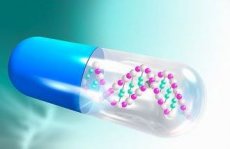Gene therapy has increased life expectancy
Last reviewed: 23.04.2024

All iLive content is medically reviewed or fact checked to ensure as much factual accuracy as possible.
We have strict sourcing guidelines and only link to reputable media sites, academic research institutions and, whenever possible, medically peer reviewed studies. Note that the numbers in parentheses ([1], [2], etc.) are clickable links to these studies.
If you feel that any of our content is inaccurate, out-of-date, or otherwise questionable, please select it and press Ctrl + Enter.

By influencing certain genes, it is possible to increase the average life expectancy of animals of many species, including mammals, which has already been proven by many studies. However, until today it meant an irreversible change in the genes of animals at the embryonic stage of development, an approach that is not feasible with regard to the human body. Scientists from the Spanish National Cancer Research Center (Centro Nacional de Investigaciones Oncologicas, CNIO) under the direction of its director María Blasco have proved that the lifespan of mice can be increased by a single injection of the drug directly affecting the animal genes in the adult state. They did this with gene therapy, a strategy that has never been used to combat aging. The use of this method in mice is recognized as safe and effective.
The results of the study are published in the journal EMBO Molecular Medicine. Using gene therapy, scientists from CNIO in collaboration with Eduard Ayuso and Fátima Bosch from the Center for Animal Biotechnology and Gene Therapy of the Autonomous University of Barcelona (Universitat Autònoma de Barcelona) have achieved " rejuvenating "effect in experiments on adults (yearlings) and old (two-year old) mice.
Mice receiving therapy at the age of one year lived longer on average by 24%, and at the age of two years - by 13%. In addition, the treatment resulted in a significant improvement in animal health, delaying the development of age-related diseases such as osteoporosis and insulin resistance, and improving aging indicators such as neuromuscular coordination.
The gene therapy used consisted in introducing animals with a modified DNA virus in which the viral genes were replaced by the genes of the telomerase enzyme, which plays a key role in aging. Telomerase restores the terminal regions of chromosomes, known as telomeres, and thus slows the course of the biological clock of the cell and, consequently, of the whole organism. The virus acts as a vehicle that delivers the telomerase gene to cells.
This study "shows that it is possible to develop anti-aging gene therapy based on telomerase without increasing the incidence of cancer," claim its authors. "Aging organisms accumulate DNA damage due to shortening of telomeres, [this study] shows that gene therapy based on telomerase synthesis can restore or delay the occurrence of such lesions."
Telomeres protect the ends of chromosomes, but they can not do this endlessly: with each division of the cell, telomeres become shorter until they are shortened so that they completely lose their functionality. As a result, the cell ceases to divide and grows old or dies. Telomerase prevents this, preventing shortening of telomeres or even restoring their length. Essentially, what she does is stop or reset the biological clock of the cell.
But in most cells, the telomerase gene is active only before birth; in cells of an adult organism, with few exceptions, telomerase is not expressed. These exceptions are represented by adult stem cells and unrestrictedly dividing cancer cells, which are therefore immortal: the key to the immortality of tumor cells is precisely the expression of telomerase, has been shown in a number of studies.
It is this risk - increasing the likelihood of developing cancerous tumors - delays research into the development of anti-aging drugs based on telomerase.
In 2007, the Blasko group proved that it is possible to prolong the life of transgenic mice whose genome was irreversibly altered at the embryonic stage: the scientists forced their cells to express telomerase and, in addition, built in them additional copies of the cancer resistance genes. Such animals live 40% longer than usual without cancer.
Mice that received gene therapy in these experiments are also free of cancer. In the opinion of Spanish scientists, this is due to the fact that treatment begins when animals are already adults and therefore do not have time to accumulate a sufficient number of aberrant divisions for the appearance of tumors.
In addition, the type of virus used to deliver the telomerase gene to cells is of great importance. The authors selected apparently safe viruses, which were successfully used in the gene therapy of hemophilia and eye diseases. In particular, these are not replicating viruses obtained from others that are not pathogenic to humans.
This study is seen primarily as a proof of the correctness of the concept that the telomerase-based therapy is a possible and generally safe approach to increasing the life expectancy without diseases and to treating diseases associated with short telomeres.
Although this method may not find use as an anti-aging agent for the human body, at least in the short term, it can open up new possibilities in the treatment of diseases associated with the presence of abnormally short telomeres in the tissues, for example, in some cases of human pulmonary fibrosis .
According to Blasco, "aging is not currently considered a disease, but scientists are increasingly inclined to regard it as a common source of conditions such as insulin resistance, or cardiovascular diseases, whose frequency increases with age. With the treatment of aging cells, we could prevent these diseases. "
"Since the vector we used expresses the target gene (telomerase) for a long period, we were able to limit ourselves to its single administration," explains Bosch. "This may be the only practical solution for anti-aging therapy, since other strategies would require the administration of the drug throughout the life of the patient, multiplying the risk of side effects."

 [
[